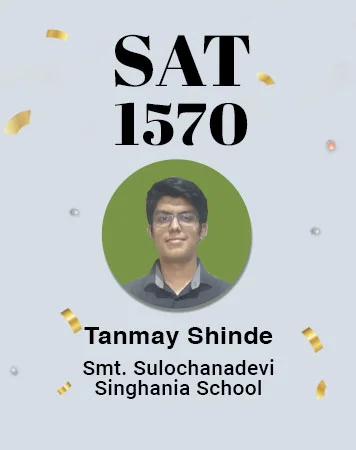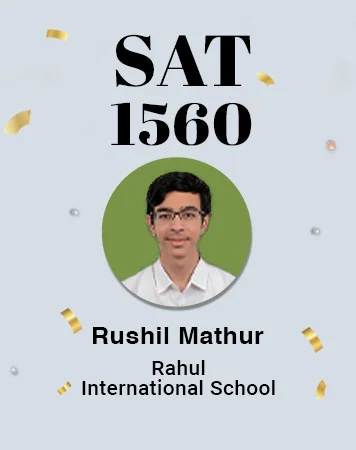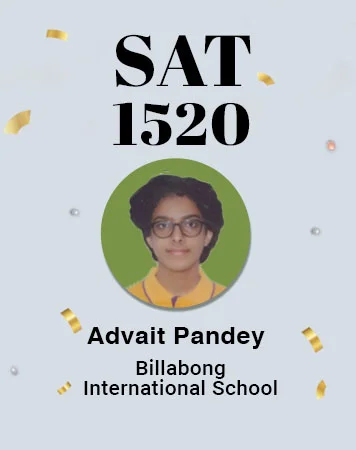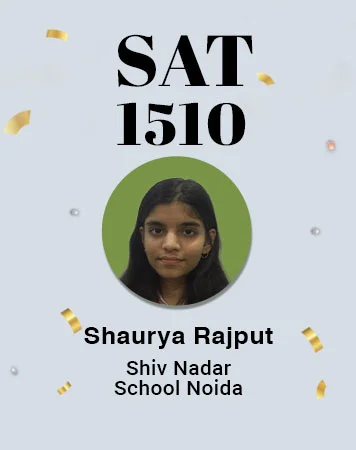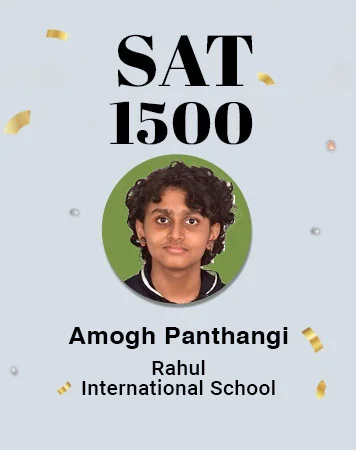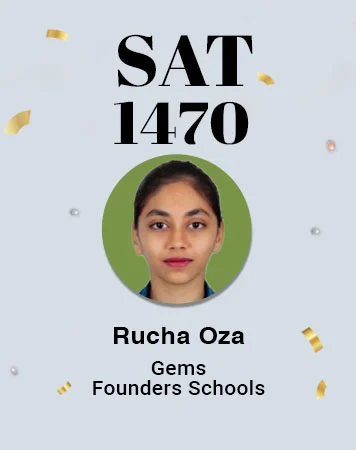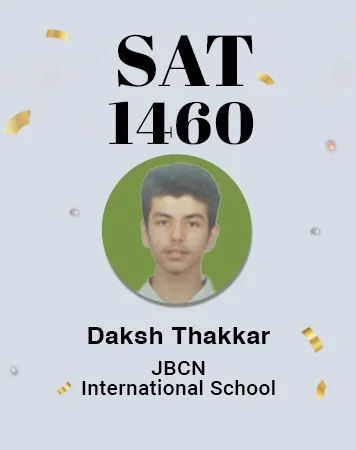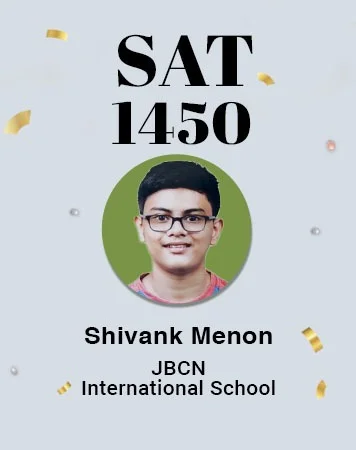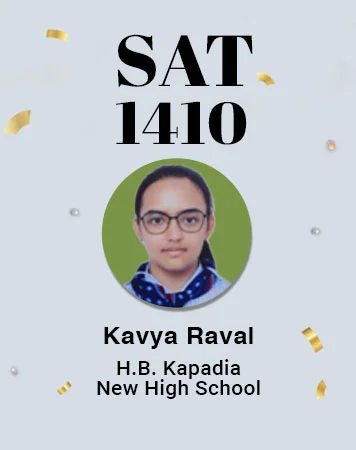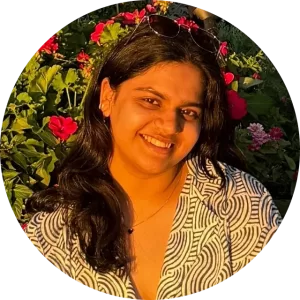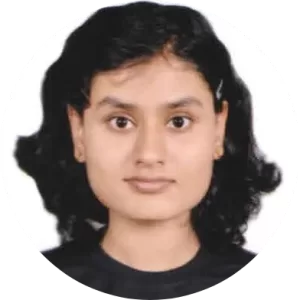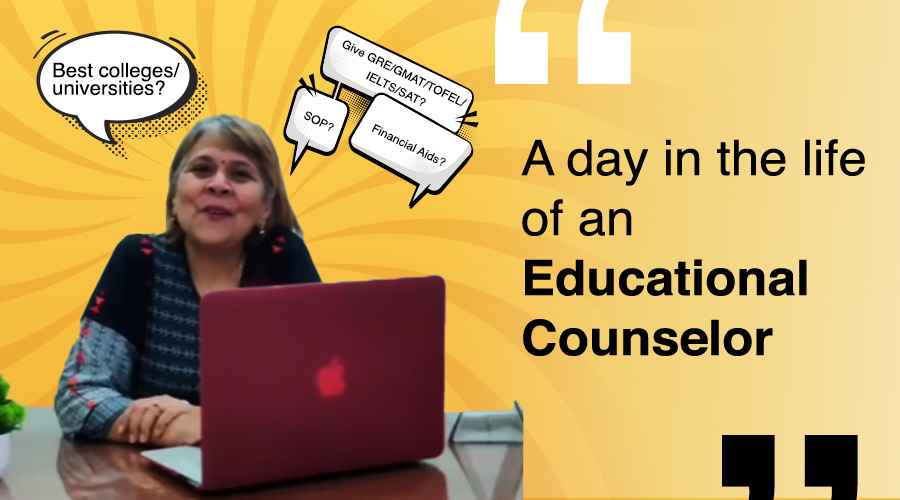SAT One on One Coaching Classes
The SAT is an entrance test for students seeking admission to undergraduate programs abroad, especially in the US, Canada, and Singapore. Many universities in India also accept SAT scores.
SAT Digital is now Live
Get in Touch
Call us on: +91 9167255434
OR
Fill in the details to get personalized advice from our experts!
We are the official coaching partner of premier schools across cities, such as Mumbai, Pune, Lonavala, Bangalore and Guwahati in India for PSAT® and SAT®.
6 Reasons Why You Must Join Inspirus Digital SAT Program

SAT Top Scores
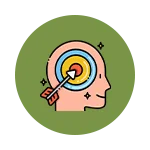
Individual Focus

Customised Program

Exhaustive Study Material
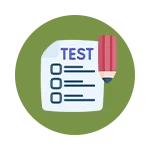
Practice Tests

Video Lectures
SAT One on One Program Features

Instructors’ Contact Hours
- 36 hours (18 sessions of 2 hours each) of coaching with instructors to learn concepts, strategies, and applications
- 10 hours of one-on-one doubt-solving with instructors
- 10 hours of mock tests analysis with instructors before the actual test
- Specialized instructors for Reading and Writing, and Math sections
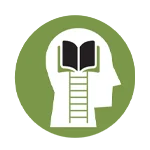
Exhaustive Study Material
- 4 concepts and practice books on Reading and Writing, and Math
- Topic-wise assessments
- 20 sectional tests
- 10 full-length mocks to simulate the real test experience
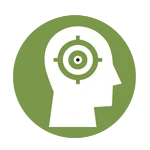
Student-centric Approach
- Diagnostic test
- Personalized study plan
- Individual student progress record
- Assistance in the test registration
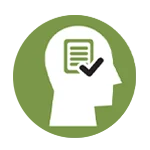
Support
- Program orientation
- Mentor support- a single point of contact between the student/parent/s and instructors
- Pre-recorded video sessions for missed classes
- Inspirus Student Learning Portal (iSLP) to access all learning materials
Our Recent High Scores
| Name of the Student | School | City | Score |
|---|---|---|---|
| Aarushi Mathur | R. N. Podar School | Mumbai | 1570 |
| Tanmay Shinde | Smt. Sulochanadevi Singhania School | Mumbai | 1570 |
| Rishan Bheda | Aditya Birla World Academy | Mumbai | 1570 |
| Rushil Mathur | Rahul International School | Mumbai | 1560 |
| Niyoshi Parekh | Dhirubhai Ambani International School | Mumbai | 1560 |
| Richik Pal | Lilavatibai Podar High School | Mumbai | 1560 |
| Roshni Rangwani | BillaBong High International School | Mumbai | 1560 |
| Suyash Jaju | Mumbai | 1550 | |
| Aarav Mukhtyar | Prabhavati Padamshi International Junior College | Mumbai | 1540 |
| Juhi Jotani | Smt. Sulochanadevi Singhania School | Mumbai | 1540 |
| Preet Modi | Smt. Sulochanadevi Singhania School | Mumbai | 1540 |
| Wynnona Fernandes | St. Xaviers College | Mumbai | 1540 |
| Youg Sanghvi | Dhirubhai Ambani School | Mumbai | 1540 |
| Ananya Sivaraman | St Xavier's High School & Junior College | Mumbai | 1530 |
| Shania Sinha | R. N. Podar School | Mumbai | 1530 |
| Divija Gupta | JBCN International School | Mumbai | 1530 |
| Advait Pandey | Billabong High International School | Mumbai | 1520 |
| Kashish Raimalani | Jamnabai Narsee International School | Mumbai | 1520 |
| Vyomini Kapse | Hiranandani Foundation School | Mumbai | 1520 |
| Pranjal Mhetre | HVCHS | USA | 1510 |
| Tishita Agarwal | Utpal Shanghvi Global School | Mumbai | 1510 |
| Amogh Panthangi | Rahul International School | Mumbai | 1500 |
| Amogh Rao | Rao IIT | Mumbai | 1500 |
| Keshav Shukla | Podar International School | Mumbai | 1500 |
| Atharva Bhambukar | Mumbai | 1490 | |
| Krish Chandani | Jamnabai Narsee International School | Mumbai | 1490 |
| Simran Porwal | R. N. Podar School | Mumbai | 1490 |
| Advita Karnad | Indus International School Pune | Pune | 1480 |
| Pranshu Srivastav | R. N. Podar School | Mumbai | 1480 |
| Arya Saliyan | Jamnabai Narsee International School | Mumbai | 1470 |
| Avika Lohia | Welham Girls' School | Guwahati | 1470 |
| Mihir Desai | One World International School | Singapore | 1470 |
| Panav Shah | Pace Junior College | Mumbai | 1470 |
| Rucha Oza | Gems Founders Schools | Dubai | 1470 |
| Arya Salian | Jamnabai Narsee International School | Mumbai | 1470 |
| Anushcka Joshi | The Assam Valley School | Guwahati | 1460 |
| Daksh Thakkar | JBCN International School | Mumbai | 1460 |
| Rushil Patni | Oberoi International School | Mumbai | 1460 |
| Akhil Gupta | RN Podar Powai | Mumbai | 1450 |
| Aryan Khatuwala | The Assam Valley School | Guwahati | 1450 |
| Shivank Menon | JBCN International School | Mumbai | 1450 |
| Aniruddh Desai | DSB School | Mumbai | 1440 |
| Isha Sethi | Mumbai | 1440 | |
| Mahak Kabra | Sanskriti The Gurukul | Guwahati | 1440 |
| Shresth Agarwal | Oberoi International School | Mumbai | 1440 |
| Ayaan Makani | SVKM JV Parekh International School | Mumbai | 1440 |
| Shashvath Iyer | Witty International School | Mumbai | 1430 |
| Vihaan Valia | The International School of Choueifat | Dubai | 1430 |
| Akanksha Somani | Smt. Sulochanadevi Singhania School | Mumbai | 1420 |
| Aryahi Bhide | JBCN International School | Mumbai | 1420 |
| Kavya Raval | The H B Kapadia New High School | Ahmedabad | 1420 |
| Nishi Kant | Lincoln International School | Navi Mumbai | 1420 |
| Ronit Kadakia | KC College | Mumbai | 1420 |
| Shlok Kamble | R. N. Podar School | Mumbai | 1420 |
| Tejas Singhal | The Heritage School | Delhi | 1420 |
| Aryan Shah | Garodia International School | Mumbai | 1410 |
| Kabir Rao | Podar International School | Mumbai | 1410 |
| Aneesh Mukherjee | Podar International School | Mumbai | 1400 |
| Pranay Tiwari | Gandhi Memorial International School | Mumbai | 1400 |
| Ronak Saha | The Kalyani School | Mumbai | 1400 |
| Aryan Tandon | VIBGYOR High School | Mumbai | 1400 |
| Anika Deshpande | Indira National School | Pune | 1400 |


